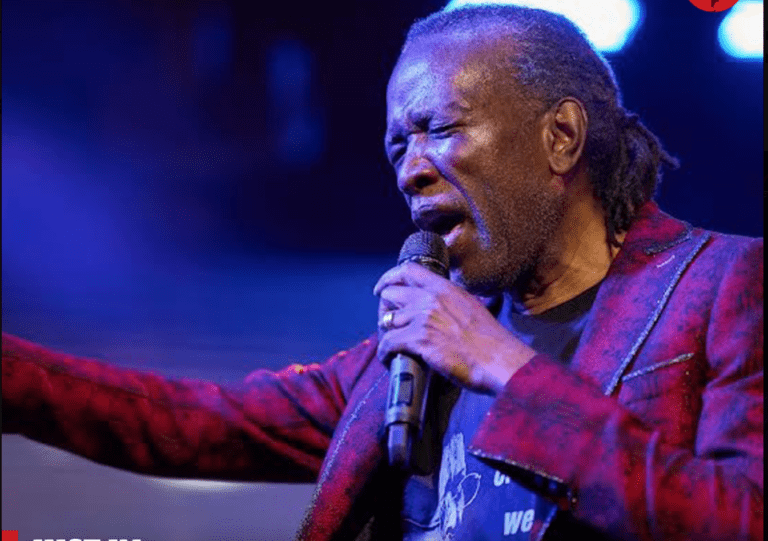In Situ at the Edna Manley College

The Edna Manley College’s final year show is a signal occasion on the Jamaican art calendar and this year’s In Situ exhibition, which closed on 12 August, certainly illustrated its significance. It provided an opportunity to see what the future may hold in the Jamaican art world in terms of the new ideas, approaches, and talents that are brewing. This year’s graduating cohort is small, with only 17 students, as the pandemic negatively affected the ability of some students to complete their course of studies. But those who were able to stay appear to have responded to the precariousness of the moment by giving it their all and the exhibition includes several truly remarkable projects.
Given my professional involvement in the college’s visual arts programme as an adjunct lecturer and examiner, it would not be appropriate for me to present this column as a critical review, but instead I wish to help to draw attention to the extraordinary work that was done by students and faculty, alike, under decidedly challenging circumstances. While there were also very strong projects from the graphic design, illustration/animation, and textile and fibre arts students, my focus is on the fine arts departments, which I know best and which for this year has six graduates, in the fields of painting, photography, and interdisciplinary studies.
The painting student Brad Pinnock’s installation on the basketball court, titled The Engineering of Consent: A Democratic Paradox, represents an expansive philosophical meditation on human nature and civilization, using the metaphor of the horse and its varied cultural associations. Set up as a surreal, giant carousel with life-size horse sculptures made from various materials, and mixed with grotesque humanoid heads, the installation explores the tensions between the irrational and the rational, between freedom and coercion, between strength and fragility, and between chaos and order. There are many art-historical allusions to artists who have taken the horse and its various symbolic implications as a subject: from European artists such as Eugene Delacroix and Alberto Giacometti and, closer to home, to Edna Manley, Phillip Thomas (who was one of Pinnock’s lecturers) and, more generally, also David Boxer. The significance of the installation was, however, most poignantly evident in the references to the local horse-racing industry, represented by the collaged betting forms that formed the installation’s large, quilt-like banner backdrop. In the betting industry, flimsy hopes for gain exist in tension with the manipulative, addictive nature of the process and the all too real possibility of losing what one can ill afford: a powerful metaphor for the contradictions and precariousness of human civilization and, no doubt, the dynamics of contemporary Jamaica.
Tevin Lewis, a photography student, presented cavernous installation located in one of the studios, a lair-like space of visual and sensory horrors and delights that grew quasi-organically throughout the academic year, as if it were a living world of its own. The project was inspired by Lewis’ interest in arthropods: invertebrate animals that have an exoskeleton, a segmented body, and paired jointed appendages, such as insects, spiders, scorpions, and shellfish. Working obsessively like a “mad scientist” in the surreal “laboratory” of the installation (and using photography as his point of departure, rather than the product), Lewis transformed photographs of classmates into drawings of fearsome humanoid arthropods that remind of ancient gods and goddesses, and also created imaginary, giant three-dimensional creatures made from various repurposed materials. His installation challenged deep-rooted fears while pointing towards the utility and potential of arthropods, as they exist in the real world and in a fantastic “what if” alternative world in which arthropods rule.
Another photography student, Tresana Pearson, documented the slaughterhouse culture in Jamaica. In doing so, she asked how the cruel treatment of animals who serve as food sources may reflect the echoes of history, particularly the legacies of slavery, but may also help to shape present-day attitudes towards human life, as is evidenced by the current epidemic of interpersonal violence in Jamaica. Gruesome as they are, some of the photographs of the slaughterhouse scenes also have a quiet, almost abstract poetry and beauty that provides some relief from the horrors documented, and an opportunity to reflect with more emotional detachment on the ethical and social issues at stake.
While Pinnock, Lewis and Pearson dealt with broader, more personally detached philosophical questions, Tishana Fisher and Pamela Chang from the painting department and Sasha-Kay Hinds from the interdisciplinary studies programme, took personal experience as their point of departure, to address at times painful issues of trauma and self-identity with courage and candour. Fisher, in a series of black-and-white, round-format painting collages that reminded of the Italian renaissance tondo paintings, presented a cathartic narrative about her anguished relationship with her absent father and the impact this has had on her sense of self. Pamela Chang, who is of African-Jamaican and Chinese-Jamaican parentage, raised questions of belonging, exclusion, and not being part of the dominant norm, in an interactive, performative installation, which included video, a large, hand-bound book consisting of her paintings, and a space in which she was present as a living sculpture.
Sasha-Kay Hinds channelled the African diasporic, Santeria divinity Oshun, who represents femininity and beauty, to create an immersive, seductively intimate installation, with video projection and objects, that reflected on race, gender, beauty ideals, and specifically on ritualistic beauty practices and self-care as a means to challenge and overcome negative, internalized racial stereotypes. Each of these installations had a strong cathartic quality, illustrating how artistic practice can be a powerful tool for personal healing and self-assertion, in ways that have broader relevance as the issues addressed are relatable to many.
Dr Veerle Poupeye is an art historian specialized in art from the Caribbean. She lectures at the Edna Manley College of the Visual and Performing Arts in Kingston, Jamaica, and works as an independent curator, writer, researcher, and cultural consultant. Her personal blog can be found at veerlepoupeye.com.






